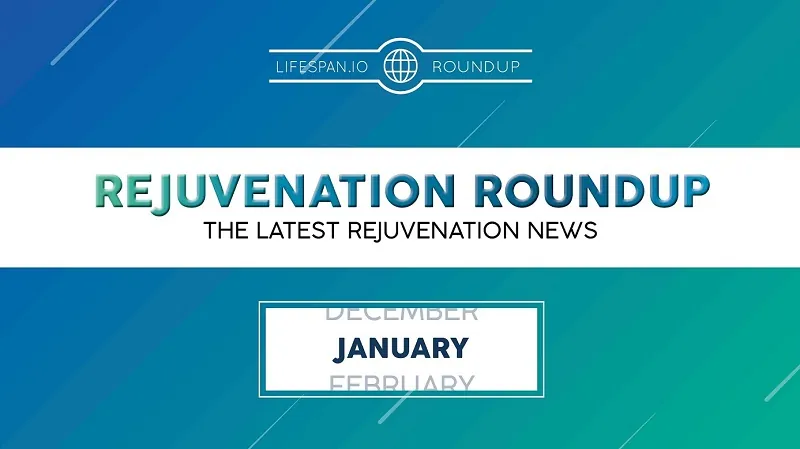2020 is well behind us, and the first month of the new year has reached its conclusion. Let’s take a look at what happened in the rejuvenation biotechnology world in January, as labs and companies around the world continue to investigate and develop cures for age-related diseases.
LEAF News
The All-Party Parliamentary Group for Longevity has analyzed United Kingdom health data and come to a shocking conclusion, which it published in The Lancet: the UK has the worst healthy life expectancy in Europe.
COVID-19 has unveiled some uncomfortable truths for the UK. The Global Burden of Diseases, Injuries, and Risk Factors Study found that Britain had the worst healthy life expectancy in Europe. This finding was driven by obesity, hypertension, chronic respiratory conditions, excess alcohol use, and inactivity, compounded in some areas by poor physical, economic, and social environments. Our national health is worse than we thought: the analysis by Outcomes-Based Healthcare using objective National Health Service (NHS) clinical data found that on average, women in England get their first major health condition when they are aged only 55 years, and in the poorest areas when they are aged only 47 years. Moreover, people in low-income areas live with ill-health for nearly 20 years longer than those in the highest-income areas. We have known this fact for many years but have not done enough to change it. Now is the time to do so.
Journal Club
Steve Hill leads a discussion featuring Irina and Michael Conboy in which the researchers discuss their own paper, which shows that diluting the aged blood factors in blood plasma reduces the inflammation of mouse neurons back to levels associated with younger animals.
Lifespan.io Interviews
Tina Woods: A Social Entrepreneur in the Longevity Field: Tina Woods shares valuable insights on how social entrepreneurship works in our field, what governments can and must do to promote healthy aging, and what kind of people dedicate their lives to longevity research.
 Causes and Solutions for Gray Hair: Prof. Melissa Harris explains the loss of hair pigmentation, as melanocyte stem cells gradually disappear with age, and what we can do about it.
Causes and Solutions for Gray Hair: Prof. Melissa Harris explains the loss of hair pigmentation, as melanocyte stem cells gradually disappear with age, and what we can do about it.
Rejuvenation Roundup Podcast
Ryan O’Shea of Future Grind hosts this month’s podcast, showcasing the events and research discussed here.
Advocacy Digest
Looking Forward to a Productive 2021 in Aging Research: Steve Hill muses on the state of this industry and discusses multiple companies that are currently making strides in its development.
 Why Your Voice Matters for Longevity: As Breanna Deutsch explains, Congressional offices take notice when people contact them, and the topic of rejuvenation biotechnology is no exception.
Why Your Voice Matters for Longevity: As Breanna Deutsch explains, Congressional offices take notice when people contact them, and the topic of rejuvenation biotechnology is no exception.
Research Roundup
Fisetin May Be Useful in Treating Pulmonary Fibrosis: This natural flavonoid has been shown to rescue alveolar cells from senescence in mice, reducing inflammation and fibrosis.
 A Cause of Genomic Instability Discovered: Our natural genetic protections against double-strand breaks decrease as we age; we produce the proteins we need for this, but they aren’t being recruited to where they need to be.
A Cause of Genomic Instability Discovered: Our natural genetic protections against double-strand breaks decrease as we age; we produce the proteins we need for this, but they aren’t being recruited to where they need to be.
Groundbreaking New Therapy for Progeria: A single base pair is responsible for the downstream damage of this premature aging disease, and a novel gene therapy, while only partially effective, has been shown to dramatically increase the lifespan of affected mice.
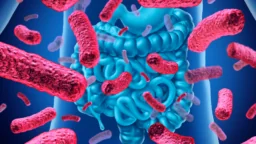 Senolytics Reduce Gut Inflammation in Mice: A new preprinted study explores the long-term effects of exposure to dasatinib and quercetin, a well-known senolytic combination, on gut microbiome composition, senescent cell populations, and inflammation.
Senolytics Reduce Gut Inflammation in Mice: A new preprinted study explores the long-term effects of exposure to dasatinib and quercetin, a well-known senolytic combination, on gut microbiome composition, senescent cell populations, and inflammation.
Arterial Stiffening Correlates With Cognitive Decline: Arterial stiffness leads to hypertension, which leads to vascular damage in the brain, which leads to damage to brain tissue.
 Exercise Found to Have Anti-Senescence Effect: The effects of exercise on health are well-known, but its effects on cellular senescence were not previously explored.
Exercise Found to Have Anti-Senescence Effect: The effects of exercise on health are well-known, but its effects on cellular senescence were not previously explored.
Senescent Cells Recruit Sympathetic Nerves: Certain nerve clusters grow in the presence of senescent cells, and these clusters have negative effects on stress responses.
 A Genetic Pathway for Preventing Hearing Loss: Activation of the gene NRF2 has been shown to help alleviate hearing loss in a mouse model.
A Genetic Pathway for Preventing Hearing Loss: Activation of the gene NRF2 has been shown to help alleviate hearing loss in a mouse model.
Alpha-Ketoglutarate Delays Age‐Related Fertility Decline: This compound, which is a natural part of metabolism and commonly taken as a supplement, has restored fertility in a mouse model.
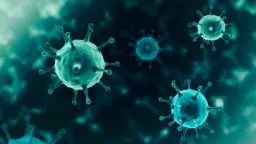 Investigating the Link Between COVID-19 and Telomeres: Shorter telomeres are associated with susceptibility to this deadly disease.
Investigating the Link Between COVID-19 and Telomeres: Shorter telomeres are associated with susceptibility to this deadly disease.
Partial Reprogramming Rejuvenates Human Cells by 30 Years: If the Yamanaka factors are applied to human cells for a precise amount of time, their epigenetics can be restored to those of youth.
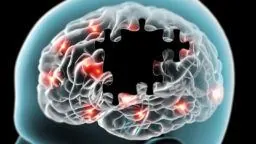 Senolytics Alleviate Age‐Related Cognitive Decline: Decreasing the populations of senescent cells in the brain restores cognitive function to aged mice.
Senolytics Alleviate Age‐Related Cognitive Decline: Decreasing the populations of senescent cells in the brain restores cognitive function to aged mice.
Glucosamine May Be a Caloric Restriction Mimetic: Glucosamine triggers a transient increase in reactive oxygen species, which then triggers protective mechanisms in a rat model of aging.
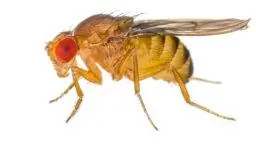 Age-related Decline in Cellular Stress Response Alleviated: The gene responsible for antioxidant protection has been identified in fruit flies, but this gene must be overexpressed throughout the flies’ lives for it to extend them.
Age-related Decline in Cellular Stress Response Alleviated: The gene responsible for antioxidant protection has been identified in fruit flies, but this gene must be overexpressed throughout the flies’ lives for it to extend them.
Rapamycin is Not a Caloric Restriction Mimetic: The effects that rapamycin has on longevity work through the mTOR pathway, which has been shown to be separate from the pathways beneficially affected by caloric restriction.
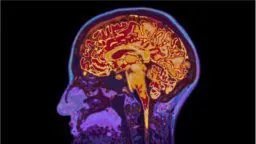 Major Depressive Disorder Causes Brain Aging: People with this disorder were shown to have brains an average of two years biologically older than people without it. The results are visible on a functional MRI, making this tool a potential biomarker of aging.
Major Depressive Disorder Causes Brain Aging: People with this disorder were shown to have brains an average of two years biologically older than people without it. The results are visible on a functional MRI, making this tool a potential biomarker of aging.
Senolysis by glutaminolysis inhibition ameliorates various age-associated disorders: Due to pH imbalances, senescent cells require ammonia production to survive, and preventing them from producing it destroys them.
Targeting and clearance of senescent foamy macrophages and senescent endothelial cells: Mesoporous silica nanoparticles, engineered to contain anti-CD9 antibodies, infiltrate into and deliver senolytics to senescent cells, helping to combat atherosclerosis of the aorta.
Identification of drug combinations on the basis of machine learning to maximize anti-aging effects: A team of Korean researchers has created a deep learning system for identifying drug combinations that target the multiple factors associated with aging.
Youthful and age-related matreotypes predict drugs promoting longevity: Genes associated with the extracellular matrix (matreotypes) are identified and used to create collagen-enhancing drugs.
Universal DNA methylation age across mammalian tissues: To create a universal clock, the researchers generated 10,000 methylation arrays using the highly conserved genetic regions of over 59 tissue types derived from 128 mammalian species.
Genome Methylation Predicts Age and Longevity of Bats: An epigenetic clock has been developed across 26 bat species.
MOTS-c is an exercise-induced mitochondrial-encoded regulator of age-dependent physical decline and muscle homeostasis: This mitochondrial factor can significantly enhance physical performance in young, middle-aged, and old mice.
Restoring metabolism of myeloid cells reverses cognitive decline in ageing: In aging mice, the glucose metabolism of certain supportive brain cells begins to decline, driving inflamamation; reversing this process restores cognitive abilities.
Transcriptomic profiling of mutant mice implicates mitochondrial metabolism in ageing: Comparing the genetic profiles of short-lived and long-lived mice
Metformin Use Is Associated With Reduced Mortality in a Diverse Population With COVID-19 and Diabetes: Metformin is a common diabetes drug, and its use has been associated with longevity in previous studies. The authors of this study posit multiple reasons why it appears to be effective against COVID-19 mortality.
Parasite Presence Induces Gene Expression Changes in an Ant Host Related to Immunity and Longevity: This parasite reduces its host’s activity and upregulates immune response, leading to life extension.
Extracellular vesicles rejuvenate aged bone marrow-derived mesenchymal stem cells: Cells use extracellular vesicles to send proteins to one another, and when these vesicles contain proliferating cell nuclear antigen, the recipient mesenchymal stem cells are rejuvenated.
NAD+ boosting reduces age-associated amyloidosis and restores mitochondrial homeostasis in muscle: The misfolded proteins known as amyloids accumulate in aging muscle cells, but NAD+ supplementation restores their ability to deal with these proteins.
Protein signatures of centenarians and their offspring suggest centenarians age slower than other humans: There are significant differences in the proteins of centenarians and other people, and not just because the centenarians are very old.
News Nuggets
 NOVOS Explains Its New Nutraceutical: The founders of NOVOS identify what’s in their neutraceutical supplement and explain what the ingredients do.
NOVOS Explains Its New Nutraceutical: The founders of NOVOS identify what’s in their neutraceutical supplement and explain what the ingredients do.
AI Identifies Senescent Cells and Tests New Drugs: Being able to identify senescent cells with a machine learning algorithm makes it much easier to discover which senolytic compounds are effective.
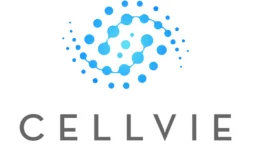 Cellvie Raises $5 Million to Develop Mitochondrial Therapeutics: Cellvie has just closed a $5 million seed round to begin developing rejuvenation biotechnology that seeks to address mitochondrial dysfunction.
Cellvie Raises $5 Million to Develop Mitochondrial Therapeutics: Cellvie has just closed a $5 million seed round to begin developing rejuvenation biotechnology that seeks to address mitochondrial dysfunction.
A New Resource for Developing Interventions to Treat Aging: The Buck Institute for Research on Aging has done research on seven hundred aging mice in order to create a detailed database that other researchers can refer to when analyzing their own experiments.
Coming up in February
On February 11, from 11:00 AM to 4:00 PM Eastern time, the International Longevity Alliance and the Healthy Life Extension Society will host a Zoom conference in which renowned scientists are invited to give presentations on both rodent and human studies. An online discussion of the conference will be held from 2:00 PM to 3:30 PM on the following day.

